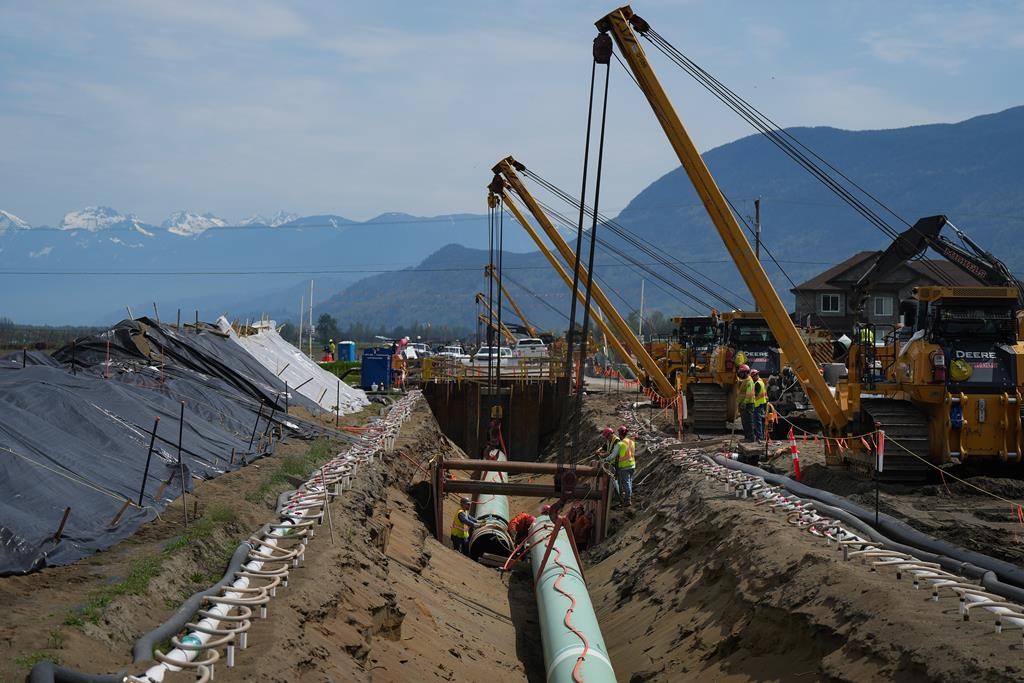The operator of the Trans Mountain oil pipeline may launch a process this year to formally gauge commercial interest in the first of a series of potential projects to increase the system’s capacity, CEO Mark Maki said on Wednesday.
The process, known as an “open season,” would determine whether there is enough shipper interest to go ahead with introducing chemical additives that reduce pipeline friction, allowing for increased flows.
Maki said adding these drag-reducing agents could enhance daily delivery volumes on the 890,000 barrels per day pipeline by 5 per cent to 10 per cent and would be relatively inexpensive, with
an estimated capital cost between $10 million and $20 million.
The Trans Mountain pipeline, which is owned by the Canadian government, ships oil from Edmonton, Alberta to Burnaby, on British Columbia’s west coast, where it can be shipped to overseas markets including China.
A $34 billion expansion was completed last year, tripling the pipeline’s capacity.
Workers lay pipe during construction of the Trans Mountain pipeline expansion on farmland, in Abbotsford, B.C., on Wednesday, May 3, 2023.
THE CANADIAN PRESS/Darryl Dyck
The pipeline is currently about 84 per cent full, but Trans Mountain forecasts growing production from Canada’s oil sands industry and says the system could be maxed out as early as 2027-2028.
“(Canadian oil shippers) want capacity and they want certainty – they don’t want to be caught in a position where we’re short barrels,” Maki said in an interview.
Canadian oil shipments to the U.S. are currently exempt from tariffs, but ongoing trade tensions with its neighbor to the south have caused Canada – the world’s fourth-largest oil
producer – to seek to diversify its exports.
Public opinion polls have showed an uptick in domestic support for a new oil pipeline to overseas markets, but no private company has indicated an interest in building such a project.
Trans Mountain is also exploring adding additional pumping stations to increase flow on the line, as well as the potential construction of between 20 and 40 kilometers (12 to 24 miles) of
new pipe to increase the line’s diameter at certain locations.
The cost of those projects is yet to be determined, Maki said, adding an open season for those projects would likely take place in 2026 with an in-service date sometime in 2029.
If all the Trans Mountain enhancement projects being considered go ahead, they could increase Canada’s current oil export capacity by between 200,000 and 300,000 bpd, he said.
Canada exported an average of 4.2 million bpd in 2024, about 80% of its total production.
CDN$1 = US$0.72


